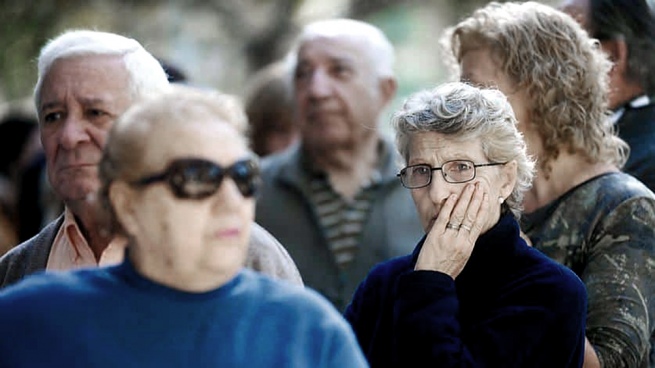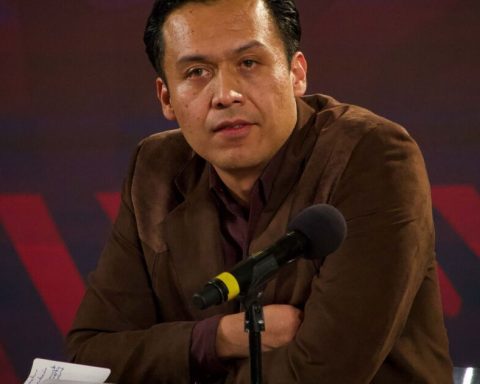The exceptional pension regimes represented in 2021 an additional expense equivalent to 4% of the Gross Domestic Product (GDP) with respect to the average level of pensions of the general regime, higher than the entire primary deficit and what the State allocated for the tariff subsidy electricity, gas and transportation.
This was stated to Télam by the director of Social Protection of the Center for the Implementation of Public Policies for Equity and Growth (Cippec), Rafael Rofman, after President Alberto Fernández and the Minister of Economy, Martín Guzmán, declared the purpose of review the pension systems of the Judiciary and the foreign service.
Referring to the negotiations with the International Monetary Fund (IMF), Fernández had pointed out that “what is being talked about is special privilege regimes, where ambassadors and judges are basically,” although he clarified that teachers were not included. .
“It seems good to me to review them, because they are unfair,” said Rofman, one of the main specialists in pension issues, who worked for two decades at the World Bank.
In any case, he pointed out that the problem of social security financing is not solved only with the review of these two regimes, since although “they are very visible because they have very notorious advantages”, in turn “they are very small in terms of spending, with an incidence that last year was less than 0.1% of GDP”.
The average retirement of the general regime is lower than all those of the exception regimes, and is only 53% higher than the average of non-contributory pensions
The data from the Social Security Secretariat for 2020 indicate that the beneficiaries of the pension system of the Judiciary were 5,700 people and those of the foreign service 11,464 cases, 6.5% of all the special regimes of the Anses and 0.46% of all exceptions.
Out of a total of 9,424,781 beneficiaries, 5,694,440 correspond to the general scheme (60.4% of the total), while the sum of exception schemes accounts for the remaining 39.6%, with 3,730,341 people.
Rofman remarked that “last year resources equivalent to 10.5% of GDP were allocated for total retirement and pensions.”
“If each Argentine over 65 years of age had been given a benefit similar to the average contributory pension of the Argentine Integrated Social Security System (SIPA), the expense would have been 6.3% to 6.4%. In other words, 40 % of what is spent on pensions is allocated to special regimes or double benefits,” he explained.
In that sense, he indicated that “everyone can make the account they want about the destination that could have been given to so many resources.”
For this proportion, retirees and exceptional pensioners, despite being 39.6% of the total, represent 54.7% of spending.
The average pension of the general regime is lower than all of the exception regimes, and is only 53% higher than the average of non-contributory pensions.
In 2020, the average credit of the general regime was three times less than that of the federal armed and security forces, and almost a quarter of the Anses special regimes.
But the difference is much greater if each of these specific regimes are considered, to the point that pensions from the foreign service and the Judiciary are on average between twelve and fourteen times higher, respectively.
Rofman admitted that it is extremely complicated to disentangle the tangle of exceptional regimes: “the last time I counted them there were 177, I don’t know if there will be more now,” he said, while noting that their existence dates back to the beginning of the 20th century, born in simultaneity with the general regime.

The creation of exception regimes, as well as their permanence, “has to do with the dynamics of political decision-making in Argentina”, in which “benefits are given to sectors, without there being a structure that defines which sector corresponds to give that benefit, but it is given to each one who demands it”.
Rofman acknowledged that over time “there have been several attempts to deactivate the emergency regimes, but they have not been successful.”
In the opinion of the specialist, the failure in the attempts to put an end to these regimes, in addition to the pressure from the benefited sectors, is due to the lack of broad political agreements to make a decision whose fruits will not be seen immediately.
“Any reform of the pension system shows the benefits in the medium and long term, but in the short term the political costs are suffered,” he admitted.
In this regard, he pointed out that “for many, messing with Social Security is like touching the third rail of the railway, because whoever does it is electrocuted and killed.”
“But if the reforms are not made, the situation worsens over time,” he warned, for which he urged “generate some political agreements and understand that reforms must be made now, but that they will have an impact in 10 or 20 years.” “, because the benefits cannot be modified retroactively.

















